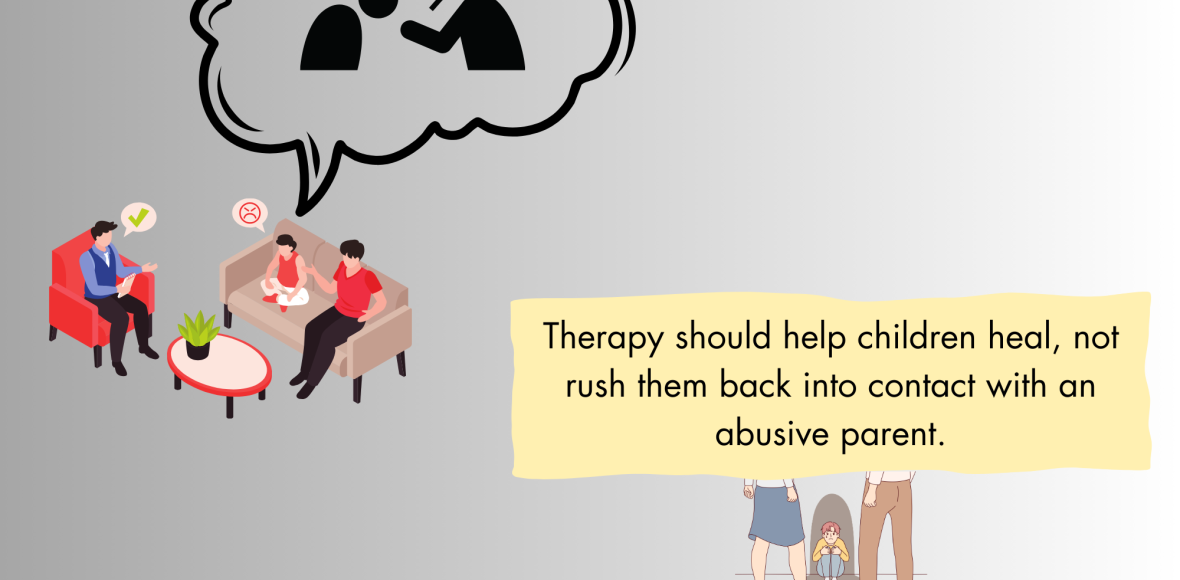
When dealing with family issues, one of the most contentious questions is whether therapy should be used to speed up contact between children and an abusive parent. The answer, despite what some might argue, should be an unequivocal no. Here’s a deep dive into why this practice is not just misguided but potentially dangerous.
Prioritizing Child Safety Over Parental Rights
The most important consideration in these cases is the safety of the child. Abuse, whether physical, emotional, or psychological can cause serious and lasting damage. Forcing a child to reconnect with an abusive parent through therapy can exacerbate these wounds, reopening old traumas and creating new ones.
The United Nations Human Rights Council (2023) has pointed out that reunification therapies can be particularly harmful in cases of domestic abuse. This begs the question: Why are courts still mandating such therapies? Is the legal system more concerned with the rights of the abusive parent than the well-being of the child?
The Misguided Purpose of Reunification Therapy
Reunification therapy is often sold as a panacea for estranged parent-child relationships, but it fails to address the underlying issues of abuse and trauma. Therapy is meant to help children understand and recover from their painful experiences. A good therapist helps the child build self-esteem and learn how to cope with their feelings. This process must be centered on what the child needs, not on attempting to quickly restore family contact to satisfy court mandates or parental desires. Mercer (2022) underscores that therapies aimed at reuniting children with abusive parents are often ineffective and can further traumatize the child. So why are we perpetuating a practice that has been shown to fail in the most critical aspects of child welfare?
The Manipulative Tactics of Abusive Parents
Abusive parents are adept at manipulating situations to their advantage. They can twist therapy sessions to further hurt or control the child, using the very tools meant for healing as instruments of further abuse. Dallam and Silberg (2016) highlight that coercive control is a common tactic used by abusers to maintain power over their victims, even through the guise of therapy. Why are therapists and courts so easily swayed by the manipulative tactics of abusers? Is it ignorance, or is there a deeper, systemic issue at play where the rights of the abuser overshadow the safety of the victim?
Before considering reconnecting a child with an abusive parent, there must be a thorough evaluation of the parent’s behavior. This includes looking for genuine, lasting changes, not just temporary fixes. However, even with these evaluations, the risk remains high. Jaffe et al. (2023) assert that the abuser must demonstrate sustained positive changes through participation in comprehensive remediation programs. But can we truly trust these evaluations when the stakes are so high? Should we gamble with a child’s well-being based on the promise of an abuser’s change?
Proponents of reunification often suggest supervised contact as a safe alternative. But how safe is it really? Even in supervised settings, the presence of an abusive parent can trigger severe anxiety and distress in a child. Kayden’s Law, part of the reauthorized Violence Against Women’s Act (VAWA) in 2022, stresses the importance of considering past evidence of abuse in custody decisions and limiting the use of reunification therapies unless they are proven to be safe and effective. Despite this, the law still permits supervised contact, implying a level of safety that may not truly exist. Are we merely creating an illusion of safety while continuing to expose children to potential harm?
Therapy should help children heal, not rush them back into contact with an abusive parent. The main goal should always be the child’s safety and emotional health, yet the current system seems to prioritize the rights of abusive parents over the needs of the child. By focusing on the child’s needs and ensuring any contact with an abusive parent is safe and positive, we can use therapy correctly: as a way to heal and move forward, not as a quick fix that could cause more harm.

Leave a Reply